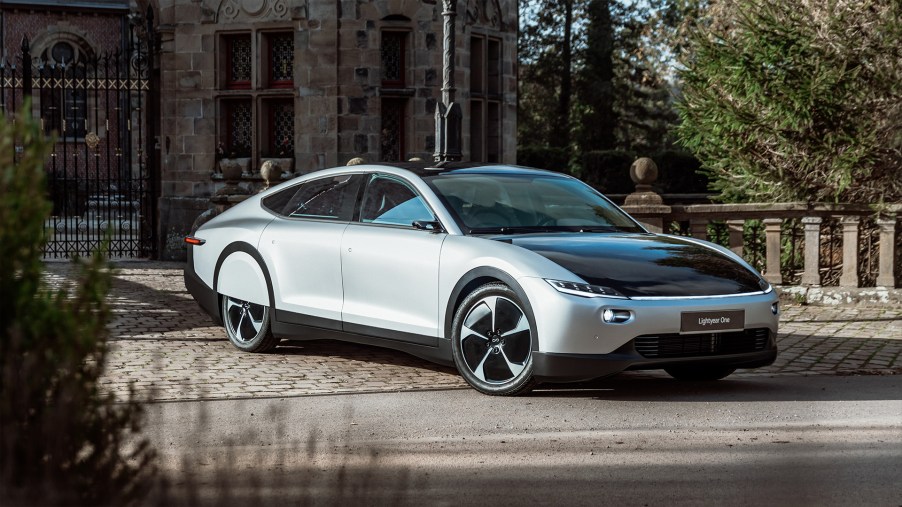
Lightyear Promises to Add up to 7 Miles per Hour in Range Using Only the Sun
Will a solar car take us to infinity and beyond? The 2023 Lightyear One will add extra mileage solely from the power of the sun. If you’ve never heard of Lightyear, you’re not alone. The EV company was formed by the Dutch university solar vehicle racing team in the Netherlands. Its goal is to create and produce a solar car. The result is a groundbreaking EV, the 2023 Lightyear One.
The history of Lightyear and the Lightyear One

The EV car company Lightyear began in 2016, with technology engineered for a clean future. Since the car was built entirely from scratch, engineers were able to use a holistic design approach. The company developed a long-range, ultra-efficient solar vehicle. The goal was to perfectly balance performance with efficiency.
The team began winning awards in 2018 for innovative solar technology and contributions to reducing climate change. In 2019 they unveiled the first prototype of a vehicle powered entirely by the sun, and they finally hit the road in 2020. Additionally, a partnership with Bridgestone has produced ultra-low-rolling-resistance tires. These Bridgestone Turanza Eco tires are a technological breakthrough that reduces energy consumption on the road, furthering the eco-friendly image of Lightyear.
After making a deal with Valmet Automotive to manufacture the Lightyear One in Finland, and raising millions of dollars for funding, the vehicle is ready for full production. It is expected to release in North America soon.
How does a solar energy vehicle work?
On the Lightyear One, solar cells cover the hood (including everything from the edge of the windshield), the roof, and down to the bottom of the hatch. Lightyear claims the solar energy collected from these panels will add 7 miles per hour of electricity to the EV while parked and up to 25 miles to the battery on cloudy days.
Any time the sun is shining, it is charging. The Lightyear One uses most of that charge while driving for a zero-sum situation. Additionally, to ensure no one ever gets stranded, there is a backup 60-kWh battery, which can be connected to a regular EV charger. The solar energy powers four in-wheel electric motors. This produced just 136 horsepower that accelerates from 0 to 60 mph in 10 seconds. However, the vehicle is rated at 885 lb-ft of torque, which is much more impressive.
The first 100% solar-powered vehicle has many other innovative, energy-boosting features and design elements. It has an aluminum and carbon fiber body for a low weight of under 2,900 pounds. Furthermore, the vehicle has an aerodynamic teardrop shape and spats covering the tires in the rear. Meanwhile, side view mirrors are replaced with cameras for an even more streamlined exterior.
Lightyear is a car concept people are excited about
The Lightyear One is designed to be completely independent of the grid. The solar-powered EV uses less energy than any electric vehicle sold today, with the lowest emissions and charging frequency. Like many other EV car companies, Lightyear’s flagship vehicle is a roomy vehicle built for five. The Lightyear One is a four-door, all-wheel drive hatchback.
According to MotorTrend, the dimensions are very close to a Mercedes CLS. The fastback’s 16-foot length allows 54 square feet of specially engineered solar cells to collect the sun’s energy. The solar panels mounted to SunPower back-contact photovoltaic cells are covered in safety glass and mounted to Endurans Solar conductive backplates.
Other standard features of the 5-passenger hatchback are over-the-air software updates for the vehicle, a companion app, wireless keyless entry and start, Apple CarPlay, Android Auto, an interior wireless charging pad, front passenger central armrest, and a LATCH system in the rear. Lastly, the dashboard looks futuristic, with controls confined to two digital screens.


